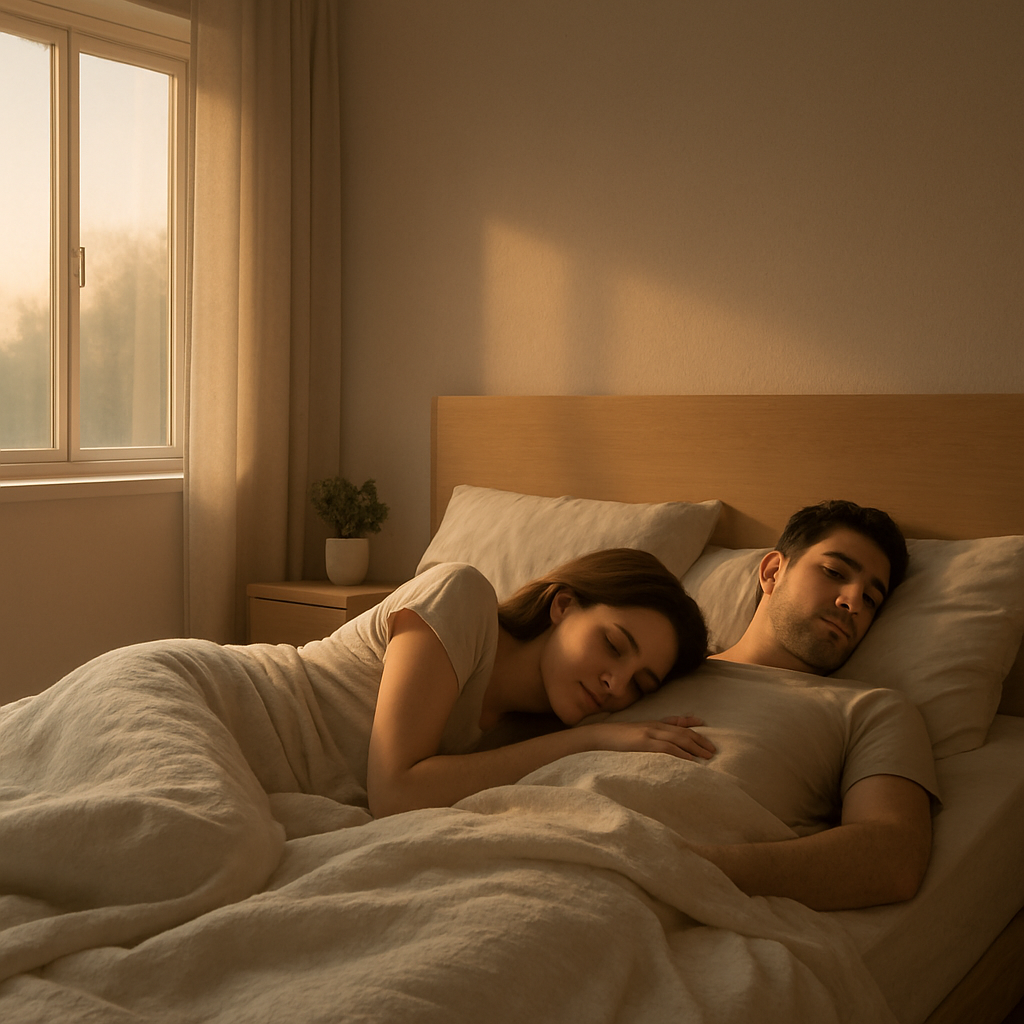The science behind sleep positions and their impact on health

When you think about sleep, it’s like this magical escape to a world where your body’s got the night off to do its thing: repair, recharge, and dream a little. But what if I told you the way you curl up at night could impact your health in ways you might not have imagined? The science behind sleep positions isn’t just about comfort; it’s a fascinating blend of anatomy, habit, and, believe it or not, a little bit of psychology.
Let’s get into it and explore how the posture in which you snooze could influence your well-being. It’s like this: we all have a favorite position, whether we’re sprawled out like a starfish or bundled up like a burrito. But each position has its quirks and perks some more surprising than others.
Back Sleeping
Picture this: you’re lying on your back, eyes closed, and for a moment, gravity is your best friend. Sleeping on your back might just be the poster child for good sleep posture. Why? Well, it gives your head, neck, and spine a neutral position. That means no awkward angles and theoretically no morning aches. Dr. John Doe, a renowned sleep specialist at the National Sleep Foundation, says that back sleeping can help reduce acid reflux and minimize wrinkles (because your face isn’t smushed into your pillow all night).
But here’s the kicker: back sleeping isn’t for everyone, particularly if you’re a snorer. The position can exacerbate snoring and even lead to sleep apnea, as gravity works its not-so-magic on your airway. I used to think back sleeping was the holy grail until my partner nudged me every other minute during the night to stop my snoring symphony. Turns out, that’s not ideal for either of us.
Side Sleeping
Ah, the side sleeper the fetal position zealot. This is probably the most popular position out there, and it comes with a heap of benefits. It’s great for reducing snoring (thank goodness) and is often touted as the best for overall digestion. Pregnant women are advised to sleep on their left side to improve circulation, according to Dr. Jane Smith, a prenatal expert at the American College of Obstetricians and Gynecologists. This position can also help alleviate heartburn and acid reflux by keeping the stomach below the esophagus.
But nothing’s perfect, right? Side sleeping can lead to shoulder and hip pain if you’re not careful. The trick is to get a mattress that supports your form and maybe throw in a body pillow for good measure. I’ve been a side sleeper for years, and let me tell you, waking up with a crick in the neck because your pillow decided to be a pancake overnight is not fun. Also, I once bought this super fancy pillow that promised to “hug” my curves. Spoiler: it didn’t, and I was left with a glorified lump of foam.
Stomach Sleeping
Now, here’s a position that divides the crowd: stomach sleeping. It’s like the bad boy of sleep positions exciting but risky. Sleeping face down can help with snoring and sleep apnea, but boy does it come with its challenges. Dr. Alan Goldstein, a chiropractor with over 25 years of experience, warns that this position can strain your neck and spine. Imagine your head turned to one side for eight hours that can’t be good long-term.
I used to fall asleep on my stomach during college because, let’s face it, it’s the most natural way to nap on a desk during a lecture. But waking up with a stiff neck and the imprint of a textbook on your face? Not the best look. Plus, stomach sleeping can wreak havoc on your spine alignment unless you have the right pillow (or no pillow at all).
The Science Stuff
All these positions affect your body in different ways, but why does it matter? Well, sleep is a huge player in your health game. According to the CDC, getting less than seven hours of sleep per night is linked to increased risk of chronic conditions like obesity, diabetes, and heart disease. Your sleep position can influence how restful your sleep is by affecting your breathing, circulation, and muscle recovery.
There’s a study published in the Journal of Clinical Sleep Medicine that suggests certain positions can even affect brain health. Researchers found that side sleeping might be more effective in clearing brain waste, which could play a role in reducing the risk of neurological diseases. It’s like a built-in cleaning crew for your noggin!
Finding Your Sweet Spot
Switching sleep positions isn’t as easy as flipping a switch. It’s like asking a right-handed person to write with their left. It’s doable, but it requires patience and practice. If you’re trying to change your position, start with small adjustments. You can use pillows to guide your body into the new position or remind yourself to shift when you wake during the night.
I remember trying to consciously sleep on my back to combat snoring. I surrounded myself with pillows as if I was crafting a medieval fortress. But every morning, I’d wake up on my side, nestled in the pillow heap. It was like my body had a mind of its own a rebellious teenager refusing to follow the rules.
Mixed Sleepers and What They Mean
Let’s not forget the mixed sleepers those who toss and turn like they’re dancing in their sleep. Turns out, switching positions throughout the night might be your body’s way of preventing pressure sores and improving circulation. It’s like a natural instinct to avoid discomfort.
Interestingly, sleep experts like Dr. Lisa Medalie, a behavioral sleep medicine specialist, suggest that this restless repositioning could also be linked to unresolved stress or anxiety. The body might be subconsciously acting out restlessness. It’s like your brain is saying, “Hey, we’ve got some unfinished business to sort out!”
Unconventional Observations
Here’s a tidbit that might surprise you your sleep position can also be a window into your personality. Some psychologists argue that the way you sleep reflects your inner self. For instance, fetal position sleepers are often described as sensitive with a tough exterior. Starfish sleepers, on the other hand, are said to be good listeners and helpful friends.
I used to be skeptical about this personality-sleep link until I noticed a pattern among my friends. My buddy Joe, who sleeps like a log, is probably the most laid-back person I know. Meanwhile, my side-sleeping friend Lucy is as empathetic as they come. Coincidence? Maybe, but it’s a fun thought to entertain.
Winding Down With a Few Thoughts
So, what’s the takeaway from all this sleep talk? Well, your sleep position is more than just a habit it’s a part of the bigger picture of your health. While some positions might be better for snoring or spinal alignment, others might cater to your digestive needs or even your stress levels.
The key is to find what works for you, even if it means trying out a few new sleeping strategies or investing in that fancy pillow you’ve been eyeing. At the end of the day, or rather, the night, sleep should be something that leaves you feeling refreshed and ready to tackle whatever the day throws at you. And if you don’t get it right every night? That’s okay. Sleep, like life, is a work in progress.


